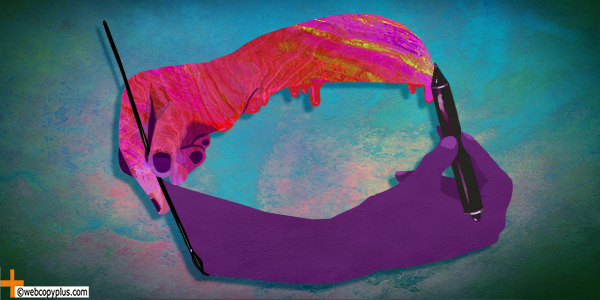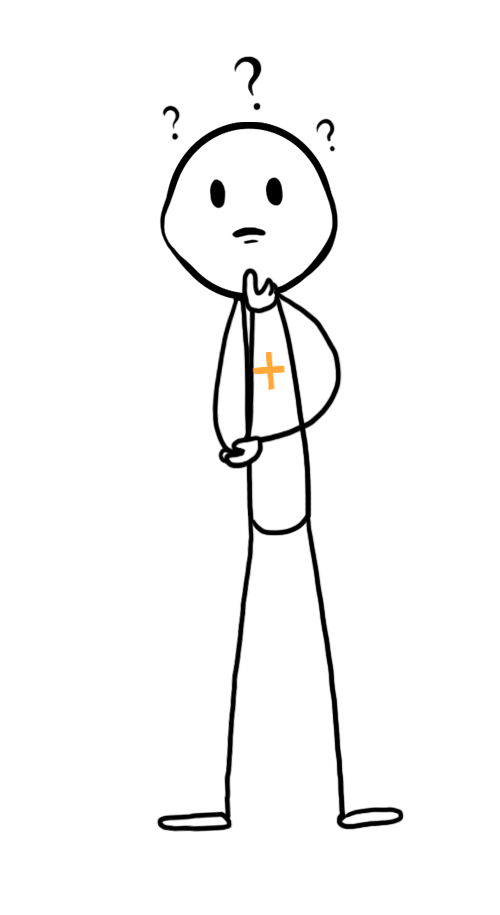
When is design, art — or art, design? From the web designer and content producer (including the web copywriter) perspective, how does the answer to this question impact the design or content creation process? Many designers also self-identify as artists and vice versa, so how does negotiating the relationship between design and art work in practice? We asked some of our Webcopy+ design partners to share their thoughts.
The Hook
James Doyle, Senior Product Developer, Invoke: “Art is freedom and design is intentional. Art is normally an expression of some kind where design tends to have practical constraints or some tertiary point to get across. Art aims to affect you in an emotional way, where design tends to affect you in some physical way.”
From Laura Cortes, Digital Creative Director and UX Consultant: “Art is all about the creator…it exists without a viewer. Design does not exist without a user — it is not about the creator but about who’s experiencing it. It can only succeed if the object designed, [whether] a chair, house or website, fulfills the purpose it’s been designed for.”
And Jiwon Lee, UI/UX Designer: “When we say ‘art,’ the author is in the center of the artwork. There may be an intention or message that the author is trying to convey, but the freedom empowered to the audience to feel and think, and even judge, is the major element. However, communication between the author and audience [is] a primary issue when it comes to design…there is a certain criteria of desirable aesthetics. There is nothing like ‘art that is bad,’ but ‘bad design’ may exist to a certain extent.”
The perception of what design is, and how much we consider designers to be artists, directly affects the way we communicate about or assess any content or design project — and forms the expectation surrounding deliverables.
The Bottom Line
Some considerations for differentiating design-forward and art-forward thinking, that might help guide an approach to deliverables:
Design focuses on external constraints; art is based on internal constraints: The difference between design and art is not how the creator identifies (either as a designer or an artist), but on whether the project is self-motivated (art) or directed by a broader issue (design). This would arguably mean that people who identify primarily as designers, can create art — and artists can produce design.
Design is solution-driven; art is experience-driven: Art is a projection of a person’s experience, perspective and desire, whatever the form of the final piece. Design takes a specific problem and finds solutions for it; “art,” to a designer, is a tool, a means to achieve the solution.
Design is on one end of the creative spectrum; art on the other: Design and art focus on different goals. Art wants unrestrained self-expression; in addition to best practice, design adheres fairly strictly to a set of user- or client-defined parameters for aesthetic, purpose and function.
Design is externally motivated, solution driven, and a defined process that can be measured through qualitative principles; art is internally motivated, experience driven, and highly subjective: Content creators can certainly use this generalization to guide their brief for crafting copy, and other content elements.
The Crystal Ball
The question of when/whether design is art, and when it’s appropriate to be more one than the other, is ongoing — but what’s our current take-home?
Design is not (quite) art; it mainly follows function, while art follows form. Design and art pursue different goals, but can (and often do) coexist within a particular design discipline, product or work — specifically, some web design easily accommodates both design-forward and artistic-forward thinking (the linked Medium article above provides illustrative examples).
Invoke’s James Doyle considers art and design to have fundamentally different motivations, (freedom of expression vs. practical intention), but uses a product example to show the exception: “I would probably choose the padded ergonomic chair over the ‘artistic’ concrete one…[but] sometimes you get something like an Eames chair, which is beautiful and comfy.”
Following from that rationale, “design can be judged by a great number of people (users) and on a qualitative perspective (‘bad’ or ‘good’ design), while art is completely subjective and only an elite defines a work of art,” says UX Consultant Laura Cortes.
So qualitatively, what constitutes good design? UI/UX Designer Jiwon Lee recalls Dieter Rams’ ten principles for good design, specifically Rule No. 10: “Good design is as little design as possible.”
And the key differentiator between design-forward thinking, and a more artistic mindset? The designer is a problem solver whose task it is to create the most successful solution to someone else’s (e.g. user) need, not necessarily to create something that is the most personally aesthetically pleasing.
The goal of design is to support content by providing thoughtful solutions to specific problems, and to provide a better user experience.

Do you agree, or do you think an art-forward approach should play a larger role in web design? Let us know your thoughts! Or contact us to get our web copywriters involved on your next web design project.






Neat piece — I think both art and design are critical to society, helping us and reflecting a mirror back at us too. :)